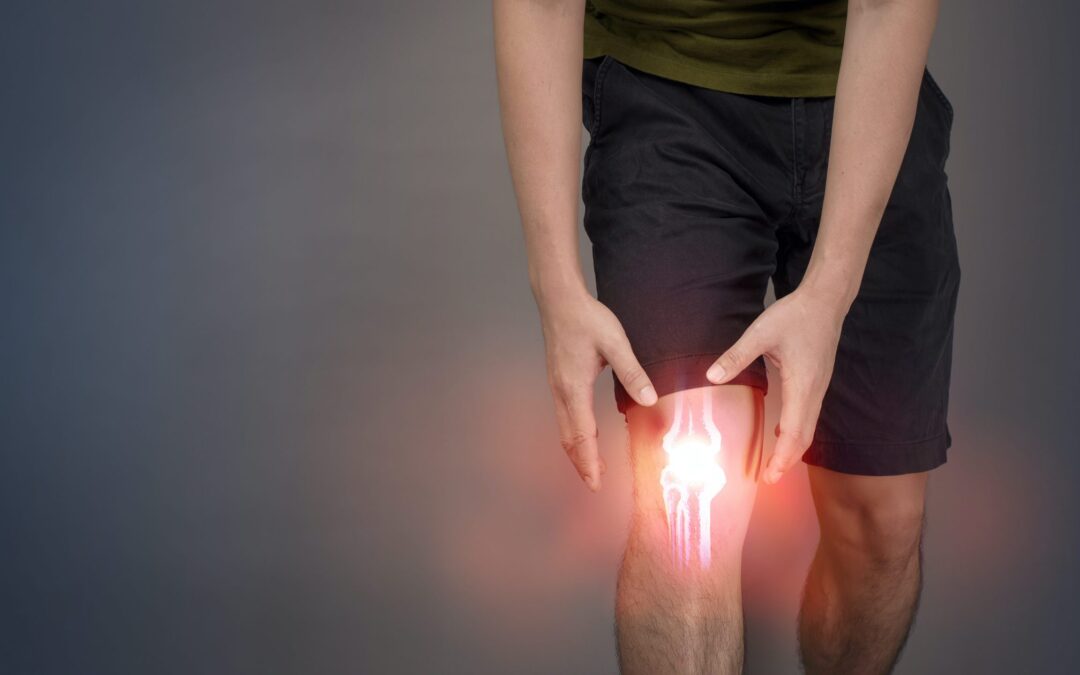Ergonomics to Prevent Knee Problems
By Richard Bunch, PhD, PT, CBES and Trevor Bardarson, PT, OCS, CBES
Knee problems are increasing in frequency among the American population as the work forces ages and becomes heavier. A measurement of stresses on the knee measured by assessing the force on the knee cap (patella) during different activities provides us with some degree of guidance as to the ergonomic risk factors that should be considered.
The weight of the body places forces through the back, hips, knees and ankles. The most optimum alignment of the areas of the body exist when the body is in a neutral posture. If a vertical line is used as the reference when viewing a person standing from the side (a profile view), the neutral posture exist when an imaginary vertical line bisects the ear, shoulder joint, hip joint, knee joint and ankle joint. As the body is placed in difference postures, the center of gravity in the body changes, and the imaginary vertical line will shift from neutral. The subsequent alteration in forces from this shift will create an increase in internal forces and stress in our bodies. In regards to the knee, the internal force in the knee increases proportionately to body weight and the degree of knee flexion while loaded as when squatting or flexing the knee to climb stairs. (Bunch, Bardarson, 2022)
Forces on the knee related to body weight during basic work activities are listed below for work activities involving standing, walking, climbing stairs and squatting:
- Forces on the patella from standing and walking: .5-1.5 x Body Weight
- Forces on the patella from climbing stairs: 3x Body Weight
- Forces on the patella from squatting: 7-8x Body Weight
It is apparent that activities such as climbing stairs and squatting can significantly increase stress on the knees. Ask anyone who has played catcher on a baseball team for many years, and that person will most likely tell you that they have experienced significant knee problems.
Effects of prolonged standing on the job has shown a high prevalence of musculoskeletal disorders (MSDs) when standing is required for more than 4 hours continuously (Kim, et.al., 1994). Prolonged standing also leads to lower back pain and foot ankle pain. The combined risk factors of prolonged standing and obesity have been associated with foot disorders such as plantar fasciitis and heel spurs.
Jobs requiring repetitive stair climbing and/or prolonged squatting will increase the risks of knee disorders resulting from the internal pressure in the knee caused by knee flexion during these loading activities. Common disorders associated with repetitive and sustained stress on the knees include patellofemoral syndrome, chondromalacia, and degenerative arthritis. Cartilage inside the knees, such as the menisci, do not have a blood supply. Highly repetitive or constant compression on the cartilage can impede the passive transport of fluids which can cause cartilage to break down and become weak. Tasks requiring a lot of twisting motions on the body increases the risk of torsion to the knee as well and that can cause a tear or rupture of the cruciate and collateral ligaments of the knee as well as a tear in the meniscus or cartilage of the knees. Knees are often damaged during slips, trips and falls as well.
Recommended Ergonomic Interventions:
The use of job rotation, changing job demands from standing to sitting periodically, and using sit-stand chairs are important ergonomic interventions to unload the knees. Focus on eliminating all low work that requires kneeling or squatting by job redesign when possible. When not possible, provide the worker with knee pads to reduce contact stress on the knees and reduce the amount of sustained work time in squatting or kneeling postures. Reduce stair and ladder climbing, again by job redesign (e.g., use of lifts and elevators) when possible and look at job rotation to non-stair/ladder climbing tasks when possible. (Bunch, 2003, 2008, 2013).
Be aware that knee problems, like many types of MSDs occur gradually over time without early warning signs. Since cartilage in the knee is essentially devoid of pain receptors, a lot of damage to the cartilage inside the knees can occur before one becomes aware of it. Therefore, waiting for knee pain to be the signal that there is a need for ergonomic changes is not recommended at all (Bunch, Bardarson, 2022).
References:
Bunch, R.W., T. Bardarson, Certified Behavioral-Based Ergonomic Specialist Course, WorkSaver Systems, 2022
Bunch, R.W., Ergonomics & Behavioral-Based Interventions for an Aging Workforce- Part 1, Interface – A Technical Publication of ASSE’s Ergonomics Practice Specialty, Vol.2, # 3, pp 24- 30, 2013.
Bunch, R.W. Ergonomics & Behavioral-Based Interventions for an Aging Workforce: Part II, Interface, Vol. 3 No. 1, Ergonomics Practice Specialty’s online technical publication. May, 2013; http://viewer.zmags.com/publication/65c71362#/65c71362/1
Bunch, R.W., Achieving Optimum Productivity from an Aging Work Force- An Integrative Behavioral-Based Injury Prevention and Wellness Program for Safety Professionals 2008 American Society of Safety Engineers, PDC Proceedings papers, ASSE National PDC Conference, June 11, 2008, Las Vegas, Nevada.
Bunch, R.W. Ergonomics Chapter 19, pp 401-428, Practical Loss Control Leadership, 3rd edition, Publisher: DNV, 2003.
Kim, J.Y., C. Stuart-Buttle, and W.S. Marras, The effects of mats on back and leg fatigue. Applied Ergonomics, 1994. 25(1): p. 29-34.
Interested in becoming certified as a Behavioral-Based Ergonomic Specialist? Click on www.cbes-ergonomics.com

